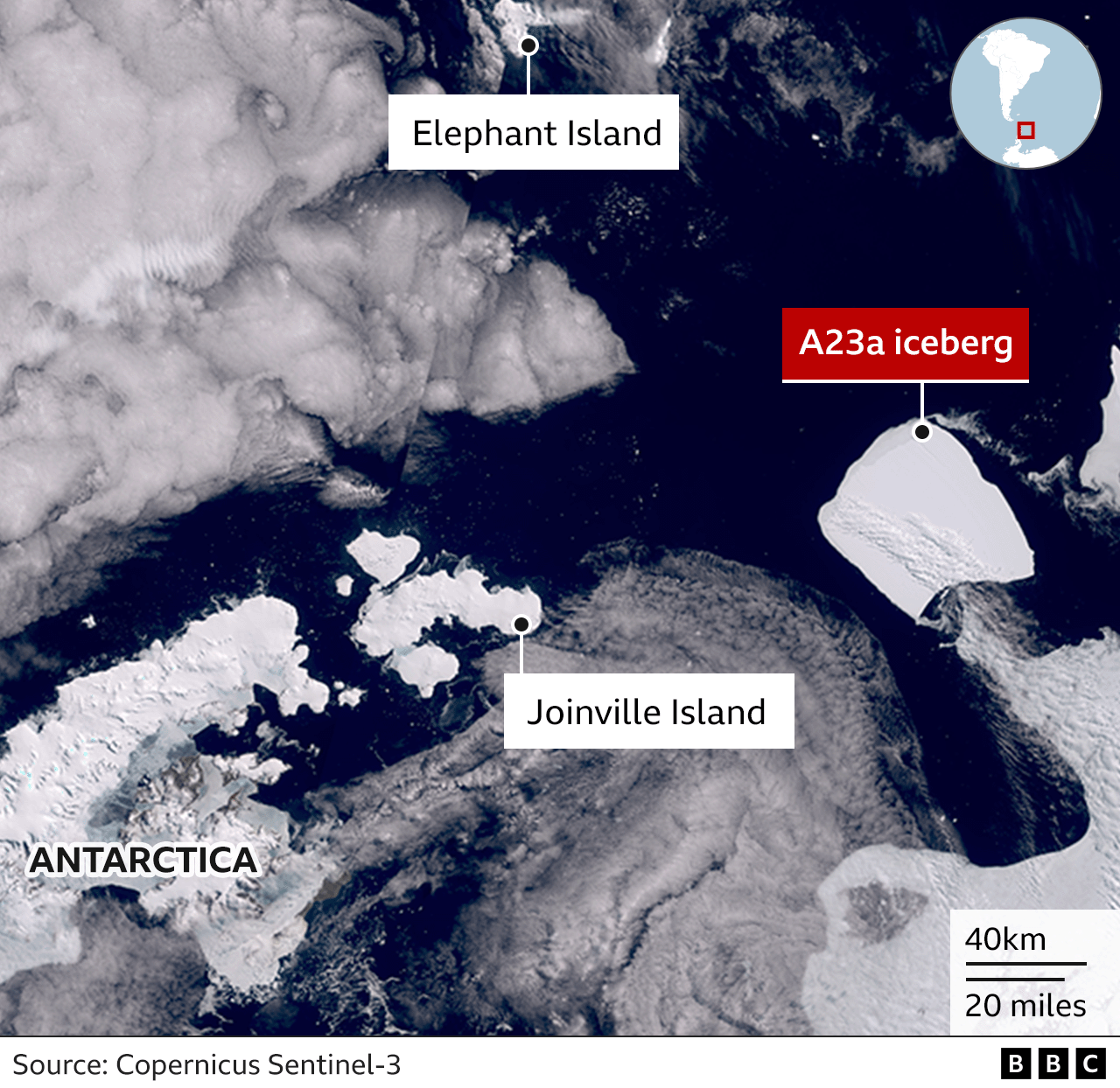
The colossus has awoken.
Iceberg A23a is on the move almost 40 years after it calved from the Filchner Ice Shelf.
For nearly all the intervening time, it's been stuck in the Weddell Sea bottom-muds.
It's now about to spill beyond Antarctica
From BBC by Jonathan Amos
The world's biggest iceberg is on the move after more than 30 years being stuck to the ocean floor.
The iceberg, called A23a, split from the Antarctic coastline in 1986.
But it swiftly grounded in the Weddell Sea, becoming, essentially, an ice island.
At almost 4,000 sq km (1,500 sq miles) in area, it's more than twice the size of Greater London.
The past year has seen it drifting at speed, and the berg is now about to spill beyond Antarctic waters.
At almost 4,000 sq km (1,500 sq miles) in area, it's more than twice the size of Greater London.
The past year has seen it drifting at speed, and the berg is now about to spill beyond Antarctic waters.
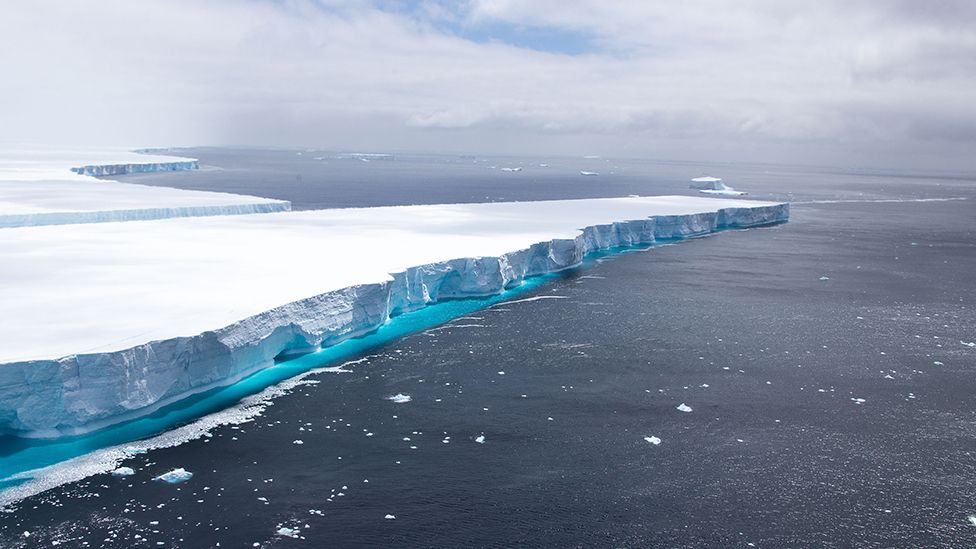 IMAGE SOURCE, CPL PHIL DYE RAF / CROWN COPYRIGHT
IMAGE SOURCE, CPL PHIL DYE RAF / CROWN COPYRIGHT Great icebergs, such as the recent A68 object, "fertilise" the oceans with mineral nutrients
A23a is a true colossus, and it's not just its width that impresses.
This slab of ice is some 400m (1,312 ft) thick.
For comparison, the London Shard, the tallest skyscraper in Europe, is a mere 310m tall.
A23a was part of a mass outbreak of bergs from the White Continent's Filchner Ice Shelf.
At the time, it was hosting a Soviet research station, which just illustrates how long ago its calving occurred.
Moscow despatched an expedition to remove equipment from the Druzhnaya 1 base, fearing it would be lost.
At the time, it was hosting a Soviet research station, which just illustrates how long ago its calving occurred.
Moscow despatched an expedition to remove equipment from the Druzhnaya 1 base, fearing it would be lost.
But the tabular berg didn't move far from the coast before its deep keel anchored it rigidly to the Weddell's bottom-muds.
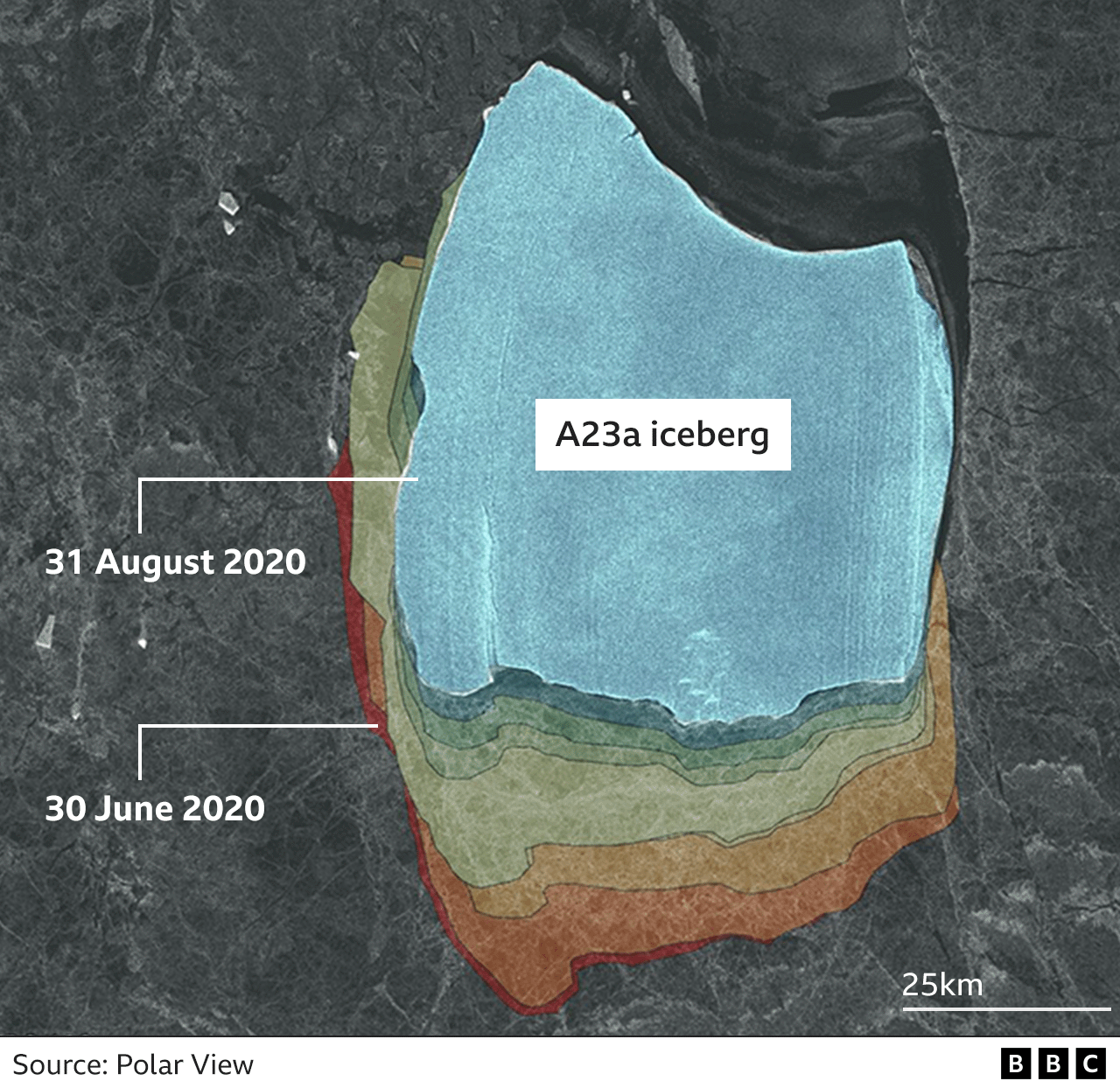

Iceberg A23a first began to stir from its long static slumber in 2020
So, why, after almost 40 years, is A23a on the move now?
"I asked a couple of colleagues about this, wondering if there was any possible change in shelf water temperatures that might have provoked it, but the consensus is the time had just come," said Dr Andrew Fleming, a remote sensing expert from the British Antarctic Survey.
"It was grounded since 1986 but eventually it was going to decrease (in size) sufficiently to lose grip and start moving. I spotted first movement back in 2020."
A23a has put on a spurt in recent months, driven by winds and currents, and is now passing the northern tip of the Antarctic Peninsula.
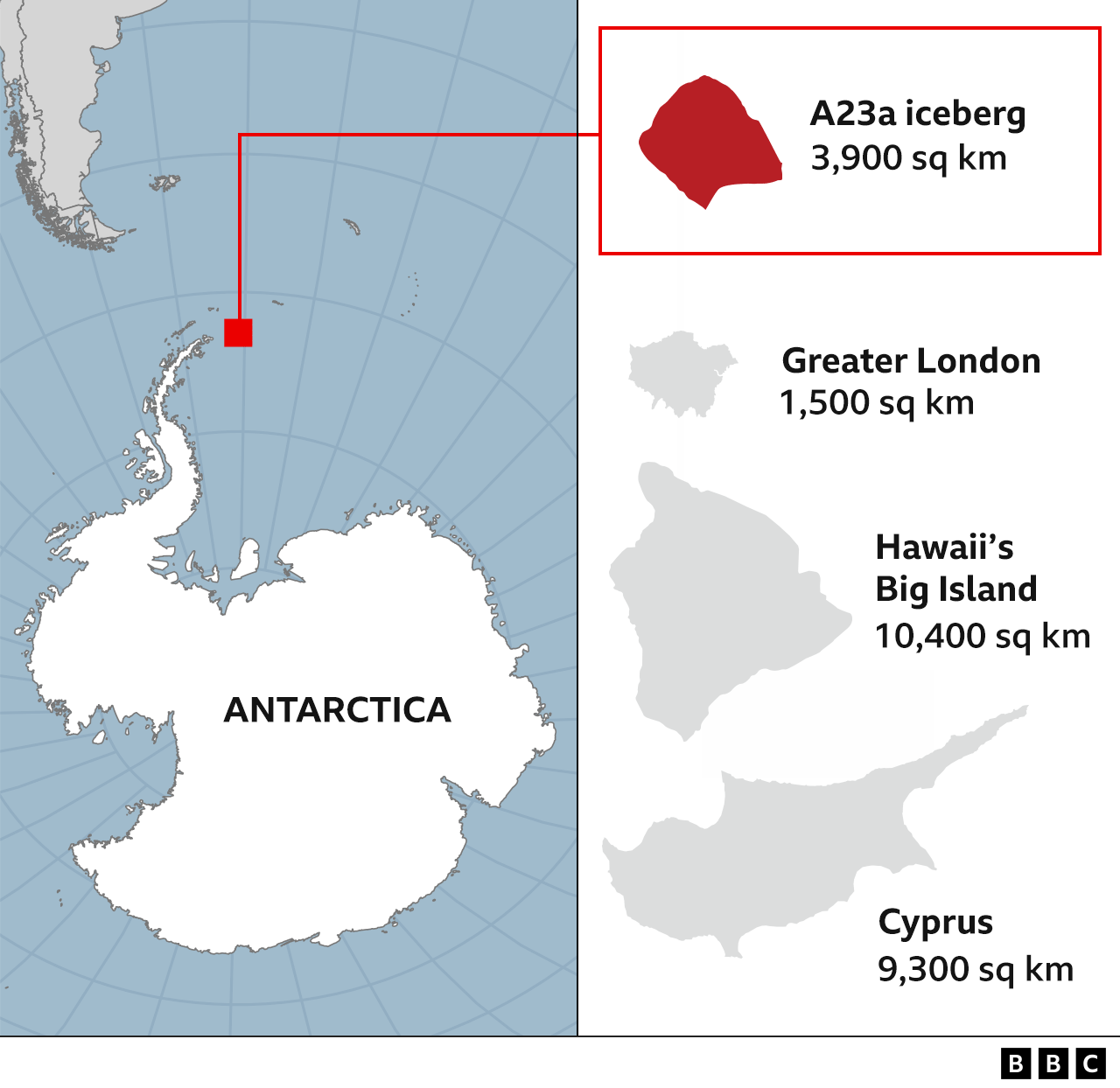
This is the same movement of water - and accompanying westerlies - that the famous explorer Sir Ernest Shackleton exploited in 1916 to make his escape from Antarctica following the loss of his ship, the Endurance, in crushing sea-ice.
Shackleton aimed his lifeboat for South Georgia, and it's at this island that you will frequently see the big tabular bergs sitting offshore.
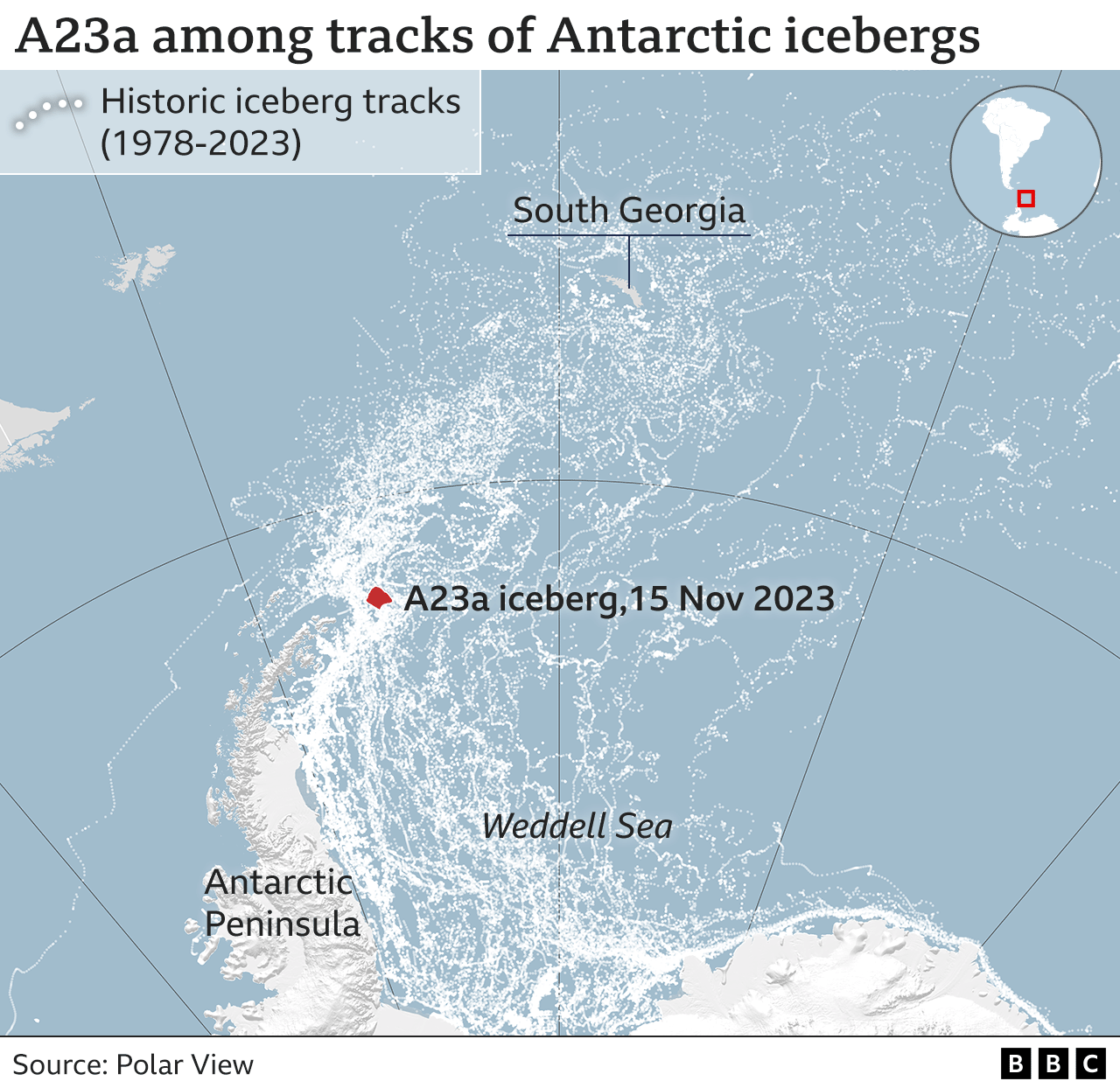
The blocks' keels mean they have a tendency to get pinned on the British Overseas Territory's shallow continental shelf.
Eventually, all bergs, however big, are doomed to melt and wither away.
Eventually, all bergs, however big, are doomed to melt and wither away.
📣 Double-whammy iceberg news this morning:
— British Antarctic Survey 🐧 (@BAS_News) November 24, 2023
1️⃣ The largest iceberg, A23a, is on the move!
Here's its journey out of the Weddell Sea after being grounded on the sea floor after calving in August 1986.
Copernicus Sentinel-1 imagery, Google Earth Engine 👇 pic.twitter.com/KseKTD1Wrg
Scientists will be following the progress of A23a closely.
If it does ground at South Georgia, it might cause problems for the millions of seals, penguins and other seabirds that breed on the island.
If it does ground at South Georgia, it might cause problems for the millions of seals, penguins and other seabirds that breed on the island.
A23a's great bulk could disrupt the animals' normal foraging routes, preventing them from feeding their young properly.
But it would be wrong to think of icebergs as being just objects of danger - Titanic and all that.
There's a growing recognition of their importance to the wider environment.
As these big bergs melt, they release the mineral dust that was incorporated into their ice when they were part of glaciers scraping along the rock bed of Antarctica.
As these big bergs melt, they release the mineral dust that was incorporated into their ice when they were part of glaciers scraping along the rock bed of Antarctica.
This dust is a source of nutrients for the organisms that form the base of ocean food chains.
"In many ways these icebergs are life-giving; they are the origin point for a lot of biological activity," said Dr Catherine Walker, from the Woods Hole Oceanographic Institution, who was born in the same year as A23a. "I identify with it; it's always been there for me."
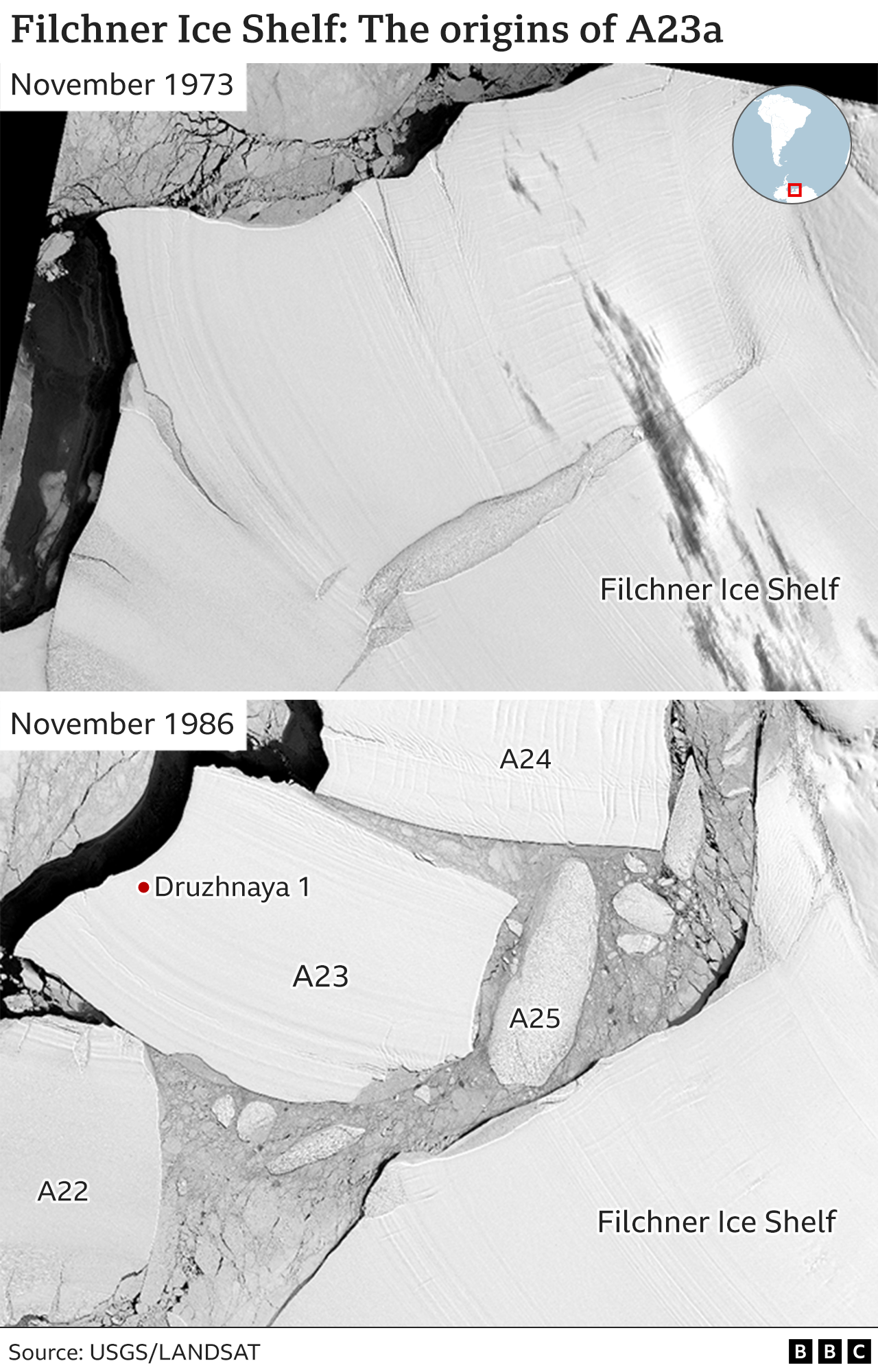
"In many ways these icebergs are life-giving; they are the origin point for a lot of biological activity," said Dr Catherine Walker, from the Woods Hole Oceanographic Institution, who was born in the same year as A23a. "I identify with it; it's always been there for me."

Links :
- BBC : Rapid ice movement monitored under UK polar base / How a colossal block of ice became an obsession / Shackleton's lost ship found after 107 years
- GeoGarage blog : Meet
the world's biggest iceberg: Huge 1,667 square mile block that's even
bigger than Majorca has broken away from the Antarctic ice shelf,
European Space Agency reveals / Giant A-68 iceberg three years on / The 'monster' iceberg: What happened next? / Antarctic Weddell expedition targets Shackleton's lost ship / Image of the week : A-68 Adrift /
A huge iceberg just broke off West Antarctica's most ... / Giant iceberg in the making / Giant Antarctic iceberg on collision course with British ... / 315 billion-tonne iceberg breaks off Antarctica

@CIRA_CSU : The world's largest iceberg, A23a, is on the move in the Southern Ocean.
ReplyDeleteMaritime Executive : Trillion-Tonne Iceberg is Stuck Spinning in the South Atlantic
ReplyDelete